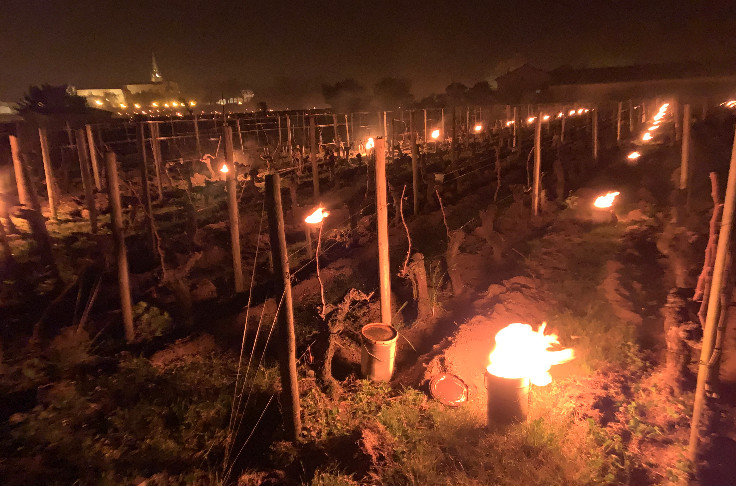The tops and flops of frost protection systems for vineyards

s viticultural advisor at the Côte d'Or Chamber of Agriculture in Burgundy, Thomas Gouroux presented trials carried out by his team and his colleagues in other regions on the various systems for combating frost at the VinEquip trade fair in Mâcon on 6 April.
“Methods involve either the vine itself, using biostimulants for example, or the environment, by increasing the air temperature or by limiting heat loss through radiation”, he explained as a preamble. In the first instance, Gouroux stressed that the Champagne wine marketing board (CIVC) has tested chitosan with little success. “We have also heard a lot about PEL 101 and PEL 102, apple pectin-based preparations applied 12 to 48 hours before frost”. In Yonne, these products have shown 0 to 50% effectiveness. “PEL is effective when vines are subjected to minimum temperatures of -2°C and when the humidity levels remain moderate”, explained Gouroux.
Last year Champagne also tried homeopathy, using ClimatPlant made from essential oils, lithothamnion, clay and sulphur, which is applied when the vines bleed. “When conditions were very cold in 2021, the results of ClimatPlant were not conclusive”.
Flashes of UV-C light do seem to improve the plant's intrinsic resistance to frost. “You have to go through all the rows 48 and 24 hours before the frost. It is cumbersome and costly, but in 2021, the CIVC noted 30 to 40% less bud loss than in a control block”. Gouroux feels that sprinkling remains the best solution, provided that the equipment is state-of-the-art and well maintained.
Among systems used on the environment itself, the Loire Valley Chamber of Agriculture tested the Frost Buster, which consists of gas canisters and a hot air gun. “At -4.9°C, the machine only limited damage over 0.025 hectares out of 0.3, a much smaller area than the manufacturer claimed”.
“The classic candles are effective provided that enough are used and that the wet temperature does not fall too low”, Gouroux quickly added, before moving on to the pellet heaters Vitichauffe, Filpack and Terrasystema.
Tower wind turbines were tested again in Yonne in 2021 and had a visible effect on 1.5 to 3 hectares out of the 4 hectares claimed. “Their effectiveness really depends on the strength of the wind and the topography of the plots”, explained Gouroux. The turbines do, however, produce good results when combined with braziers.






